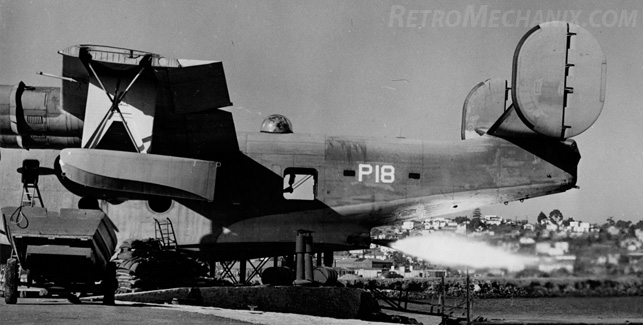Check out this article at RetroMechanix.com on an experimental Consolidated PB2Y-3 Coronado flying boat equipped with integral JATO motors in the rear step of the hull:

I believe the installation is unique to this particular Coronado, as JATO units were normally hung externally under wing and shed after take off. The article features 33 high resolution detail photos of the rocket motor installation and tests thereof; a schematic of the same; and a detailed technical description of the program. Worth checking out if you are a fan of vintage flying boats and unusual test vehicles!
-Jared

I believe the installation is unique to this particular Coronado, as JATO units were normally hung externally under wing and shed after take off. The article features 33 high resolution detail photos of the rocket motor installation and tests thereof; a schematic of the same; and a detailed technical description of the program. Worth checking out if you are a fan of vintage flying boats and unusual test vehicles!
-Jared

